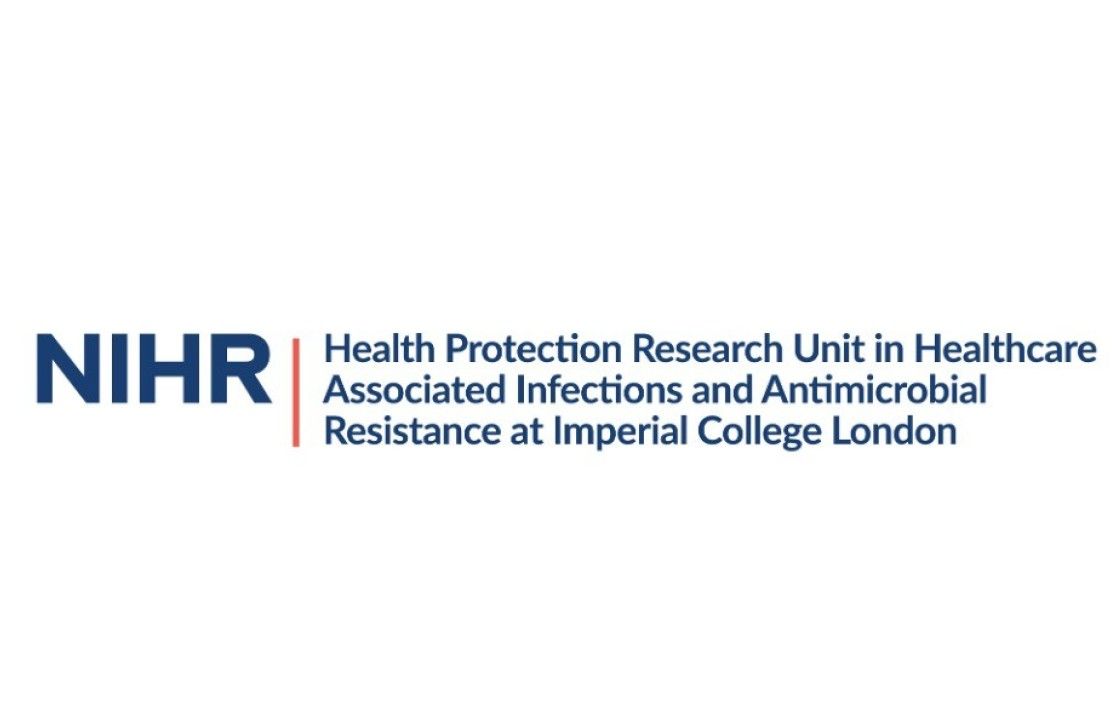Results
- Showing results for:
- Reset all filters
Search results
-
Journal articleMicallef C, Mcleod M, Castro Sanchez EM, et al., 2016,
An Evidence-Based Antimicrobial Stewardship Smartphone App for Hospital Outpatients: Survey-based Needs Assessment Among Patients
, Journal of Medical Internet Research, Vol: 4, ISSN: 1439-4456Background: Current advances in modern technology have enabled the development and utilization of electronic medicalsoftware apps for both mobile and desktop computing devices. A range of apps on a large variety of clinical conditions for patientsand the public are available, but very few target antimicrobials or infections.Objective: We sought to explore the use of different antimicrobial information resources with a focus on electronic platforms,including apps for portable devices, by outpatients at two large, geographically distinct National Health Service (NHS) teachinghospital trusts in England. We wanted to determine whether there is demand for an evidence-based app for patients, to garnertheir perceptions around infections/antimicrobial prescribing, and to describe patients’ experiences of their interactions withhealth care professionals in relation to this topic.Methods: A cross-sectional survey design was used to investigate aspects of antimicrobial prescribing and electronic devicesexperienced by patients at four hospitals in London and a teaching hospital in the East of England.Results: A total of 99 surveys were completed and analyzed. A total of 82% (80/98) of respondents had recently been prescribedantimicrobials; 87% (85/98) of respondents were prescribed an antimicrobial by a hospital doctor or through their generalpractitioner (GP) in primary care. Respondents wanted information on the etiology (42/65, 65%) and prevention and/or management(32/65, 49%) of their infections, with the infections reported being upper and lower respiratory tract, urinary tract, oral, and skinand soft tissue infections. All patients (92/92, 100%) desired specific information on the antimicrobial prescribed. Approximatelyhalf (52/95, 55%) stated it was “fine” for doctors to use a mobile phone/tablet computer during the consultation while 13% (12/95)did not support the idea of doctors accessing health care information in this way. Although only 30% (27/89)
-
Journal articleHolmes AH, Gill SK, Hui K, et al., 2016,
Increased airway glucose increases airway bacterial load in hyperglycaemia
, Scientific Reports, Vol: 6, ISSN: 2045-2322Diabetes is associated with increased frequency of hospitalization due to bacterial lung infection.We hypothesize that increased airway glucose caused by hyperglycaemia leads to increasedbacterial loads. In critical care patients, we observed that respiratory tract bacterial colonisationis significantly more likely when blood glucose is high. We engineered mutants in genesaffecting glucose uptake and metabolism (oprB, gltK, gtrS and glk) in Pseudomonas aeruginosa,strain PAO1. These mutants displayed attenuated growth in minimal medium supplemented withglucose as the sole carbon source. The effect of glucose on growth in vivo was tested usingstreptozocin-induced, hyperglycaemic mice, which have significantly greater airway glucose.Bacterial burden in hyperglycaemic animals was greater than control animals when infected withwild type but not mutant PAO1. Metformin pre-treatment of hyperglycaemic animals reducedboth airway glucose and bacterial load. These data support airway glucose as a criticaldeterminant of increased bacterial load during diabetes.
-
Journal articleAhmed Z, Garfield S, Jani Y, et al., 2016,
Impact of electronic prescribing on patient safety in hospitals: Implications for the UK
, Clinical Pharmacist, Vol: 8, ISSN: 1758-9061NHS hospitals in England are expected to be paperless by 2020 as set out in a comprehensive framework published by the National Information Board. The use of hospital electronic prescribing (EP) systems is therefore likely to increase rapidly in the near future. The aim of this review is to summarise the available evidence of the impact of inpatient EP on patient safety, with a focus on implications for the UK. MEDLINE and EMBASE were searched to identify systematic and narrative reviews published between 2000 and 2015 that examined the effects of EP on safety-related outcome measures. A total of ten reviews were identified. The evidence for the effects of EP on medication errors, adverse drug events, workflow, and healthcare professional communication are discussed, as are the potential unintended consequences and how they can be identified and mitigated. The review concludes with considerations of the evolution of EP in healthcare, especially in relation to advances in health information technology, inpatient involvement with their medication in the context of EP, and how EP may be used by policymakers and end users to further benefit patient safety.
-
Journal articleAshiru-Oredope D, Budd EL, Bhattacharya A, et al., 2016,
Implementation of antimicrobial stewardship interventions recommended by national toolkits in primary and secondary healthcare sectors in England: TARGET and Start Smart Then Focus
, JOURNAL OF ANTIMICROBIAL CHEMOTHERAPY, Vol: 71, Pages: 1408-1414, ISSN: 0305-7453- Author Web Link
- Cite
- Citations: 46
-
Journal articleVella V, Moore LS, Robotham JV, et al., 2016,
Isolation demand from carbapenemase-producing Enterobacteriaceae screening strategies based on a West London hospital network
, Journal of Hospital Infection, Vol: 94, Pages: 118-124, ISSN: 1532-2939OBJECTIVE: To estimate the isolation demands arising from high-risk specialty-based screening for carbapenemase-producing Enterobacteriaceae (CPE), and the potential fraction of CPE burden detected. METHODS: Clinical specialty groups from three London hospitals were ranked by incidence of carbapenem resistance among Escherichia coli and Klebsiella spp. Contact precaution bed-days were estimated for three screening strategies: Strategy 1, 'circulation science and renal medicine'; Strategy 2, Strategy 1 plus 'specialist services'; and Strategy 3, Strategy 2 plus 'private patients'. Isolation bed occupancy rates and potential CPE detection rates were estimated. RESULTS: Of 99,105 admissions to the three hospitals in Financial Year 2014/15, Strategies 1, 2 and 3 would have screened 4371 (4.4%), 7482 (7.6%), and 13,542 (13.7%) patients, respectively. The specialties' isolation bed occupancy rates varied between 3% and 696% depending on strategy, number of consecutive tests, and whether or not pre-emptive isolation had been applied. Expected detection rates of the potential CPE burden in the hospital network would have varied between 17.1% and 47.5%. CONCLUSIONS: High-risk specialty-based screening has the potential to detect nearly half of the potential CPE burden, and would be more pragmatic than patient-level risk-factor-based screening. Pre-emptive isolation increases isolation requirements substantially. CPE screening strategies need to balance risk and resources.
-
Journal articleMicallef C, Kildonavaciute K, Castro Sanchez EM, et al., 2016,
Is there a role for a bespoke app on antimicrobial stewardship targeting patients and the public?
, Clinical Infectious Diseases, Vol: 63, Pages: 140-141, ISSN: 1537-6591 -
Journal articleMoore LSP, Cunningham J, Donaldson H, 2016,
A clinical approach to managing Pseudomonas aeruginosa infections
, British Journal of Hospital Medicine, Vol: 77, Pages: C50-C54, ISSN: 1750-8460The Pseudomonas genus is a group of more than 140 bacterial species, all strictly aerobic Gram-negative rods, widely found in the environment, including in and around water sources. The most common species in the context of human health is Pseudomonas aeruginosa, where estimates of colonization vary from 3–5% in healthy individuals up to 20% among inpatients. However colonization does not equal infection, and despite these high rates of colonization and the potential for virulence, it is thought that fewer than 10% of inpatient infections are caused by P. aeruginosa.Specific bacterial virulence factors have been identified, the presence of which is associated with altered clinical outcomes. These virulence factors include the ability of P. aeruginosa to form biofilms (facilitating adherence to host epithelia and immunological evasion), produce extracellular proteases (to aid invasion), and directly deliver effector proteins (ExoY, ExoS, ExoT and, particularly relevant to pulmonary infections, ExoU) into the cytosol of host cells via a type III section system (Sawa et al, 2014). Yet with an inability to quickly and confidently discern virulence among P. aeruginosa in clinical laboratories, the dichotomy between colonization and infection can cause confusion in clinical practice, with potential for both under- and overtreating clinical conditions involving this bacteria. Clinical management of patients with P. aeruginosa is further complicated by the complex antimicrobial resistance of this organism. This article reviews the most common presentations associated with P. aeruginosa, appropriate investigations and their interpretation, management options, and implications for infection control and public health.
-
Journal articleBryce A, Hay AD, Lane IF, et al., 2016,
Global prevalence of antibiotic resistance in paediatric urinary tract infections caused by Escherichia coli and association with routine use of antibiotics in primary care: systematic review and meta-analysis
, British Medical Journal, Vol: 352, ISSN: 1468-5833Objectives To systematically review studies investigating the prevalence of antibiotic resistance in urinary tract infections caused by Escherichia coli in children and, when appropriate, to meta-analyse the relation between previous antibiotics prescribed in primary care and resistance.Design and data analysis Systematic review and meta-analysis. Pooled percentage prevalence of resistance to the most commonly used antibiotics in children in primary care, stratified by the OECD (Organisation for Economic Co-operation and Development) status of the study country. Random effects meta-analysis was used to quantify the association between previous exposure to antibiotics in primary care and resistance.Data sources Observational and experimental studies identified through Medline, Embase, Cochrane, and ISI Web of Knowledge databases, searched for articles published up to October 2015.Eligibility criteria for selecting studies Studies were eligible if they investigated and reported resistance in community acquired urinary tract infection in children and young people aged 0-17. Electronic searches with MeSH terms and text words identified 3115 papers. Two independent reviewers assessed study quality and performed data extraction.Results 58 observational studies investigated 77 783 E coli isolates in urine. In studies from OECD countries, the pooled prevalence of resistance was 53.4% (95% confidence interval 46.0% to 60.8%) for ampicillin, 23.6% (13.9% to 32.3%) for trimethoprim, 8.2% (7.9% to 9.6%) for co-amoxiclav, and 2.1% (0.8 to 4.4%) for ciprofloxacin; nitrofurantoin was the lowest at 1.3% (0.8% to 1.7%). Resistance in studies in countries outside the OECD was significantly higher: 79.8% (73.0% to 87.7%) for ampicillin, 60.3% (40.9% to 79.0%) for co-amoxiclav, 26.8% (11.1% to 43.0%) for ciprofloxacin, and 17.0% (9.8% to 24.2%) for nitrofurantoin. There was evidence that bacterial isolates from the urinary tract from individual children who had received previous
-
Journal articleCastro Sanchez EM, Drumright LN, Gharbi, et al., 2016,
Mapping antimicrobial stewardship in undergraduate medical, dental, pharmacy, nursing and veterinary education in the United Kingdom
, PLOS One, Vol: 11, ISSN: 1932-6203ObjectivesTo investigate the teaching of antimicrobial stewardship (AS) in undergraduate healthcare educational degree programmes in the United Kingdom (UK).Participants and MethodsCross-sectional survey of undergraduate programmes in human and veterinary medicine, dentistry, pharmacy and nursing in the UK. The main outcome measures included prevalence of AS teaching; stewardship principles taught; estimated hours apportioned; mode of content delivery and teaching strategies; evaluation methodologies; and frequency of multidisciplinary learning.Results80% (112/140) of programmes responded adequately. The majority of programmes teach AS principles (88/109, 80.7%). ‘Adopting necessary infection prevention and control precautions’ was the most frequently taught principle (83/88, 94.3%), followed by 'timely collection of microbiological samples for microscopy, culture and sensitivity’ (73/88, 82.9%) and ‘minimisation of unnecessary antimicrobial prescribing’ (72/88, 81.8%). The ‘use of intravenous administration only to patients who are severely ill, or unable to tolerate oral treatment’ was reported in ~50% of courses. Only 32/88 (36.3%) programmes included all recommended principles.DiscussionAntimicrobial stewardship principles are included in most undergraduate healthcare and veterinary degree programmes in the UK. However, future professionals responsible for using antimicrobials receive disparate education. Education may be boosted by standardisation and strengthening of less frequently discussed principles.
-
Journal articleRawson TM, Moore LSP, Hatcher JC, et al., 2016,
Plasmid-mediated colistin resistance mechanisms: is it time to revise our approach to selective digestive decontamination?
, LANCET INFECTIOUS DISEASES, Vol: 16, Pages: 149-150, ISSN: 1473-3099- Author Web Link
- Cite
- Citations: 9
This data is extracted from the Web of Science and reproduced under a licence from Thomson Reuters. You may not copy or re-distribute this data in whole or in part without the written consent of the Science business of Thomson Reuters.

